8 Ways to Use Color Psychology in Marketing (With Examples)
[ad_1]
The shades you use in your advertising and marketing and branding are foundational. You will use these to develop your brand, your web site, your adverts, and so substantially more—which implies you shouldn’t make these possibilities evenly. Alternatively, you should pick the shades you are heading to use in your branding and advertising and marketing strategically. How? The crucial is knowledge coloration psychology and using the theory to your advantage.
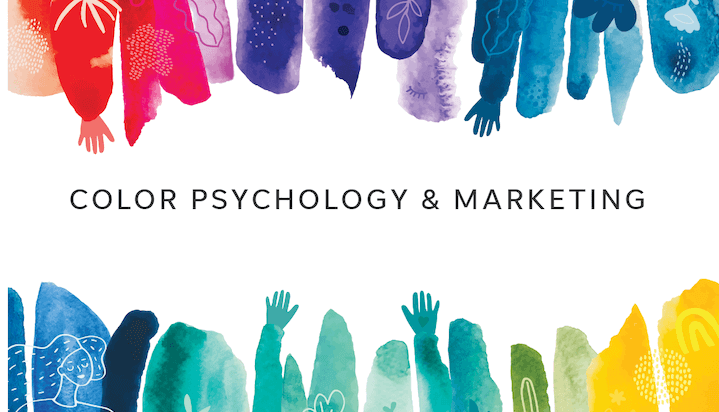
Let us get to it.
Desk of contents
In this tutorial to knowing color psychology and working with it to strengthen your advertising materials, we’ll cover:
What is colour psychology?
Coloration psychology is the theory that sure hues elicit a actual physical or emotional response and, in undertaking so, form human actions. This isn’t pretty as simple as seeing pink and having indignant or observing blue and experience at ease—but practically. Professional medical experiments propose that the coloration crimson correlates to an boost in blood force, and the color blue corresponds with a decrease.
Because of this effect on habits, colour can play a large part in generating a mood. In accordance to Architectural Digest, this can make deciding on the suitable paint colours vital for placing the tone of your house. Warm colours have a tendency to energize, though cool shades have a tendency to tranquil.
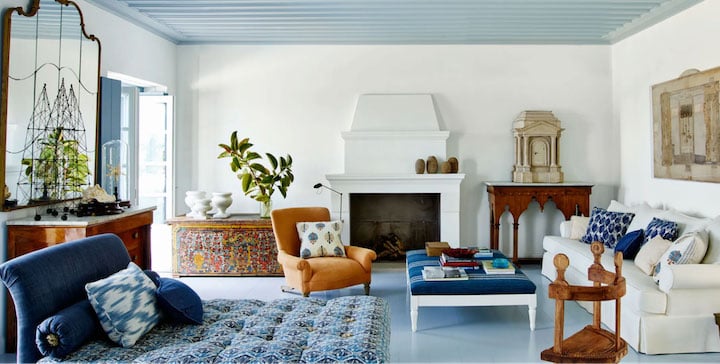
I don’t know about you, but I’m sensation calmer hunting at AD’s aspirational blue living room.
The psychology of shades has a related effect when it arrives to your model and your internet marketing approaches, and this leads us to the subsequent section.
Why does the psychology of colour in internet marketing subject?
Color can participate in a big position in marketing—whether you’re spending consideration to it or not. The colours that you use in your branding, which includes your logo, and your other promoting collateral evokes an psychological reaction in your audience, no matter whether they notice it or not.
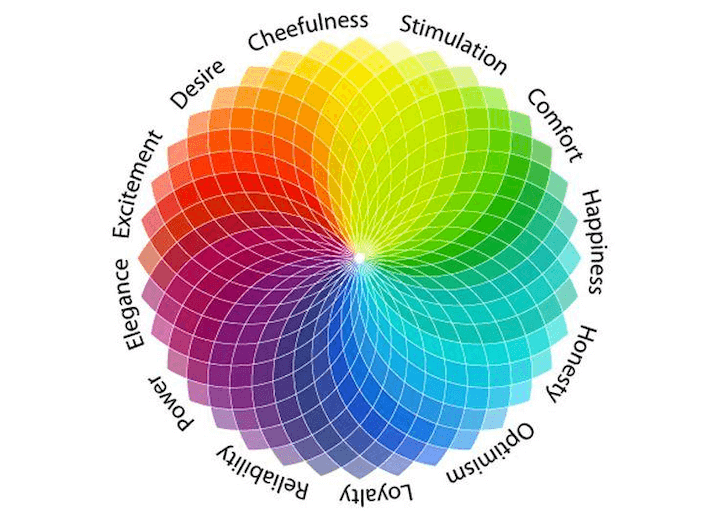
And as mentioned in our promoting psychology guidebook, we make conclusions dependent on emotion, not logic.
Base line: You have to have to consider coloration psychology when you’re making your brand name and creating your campaigns.
How to use coloration psychology to boost your advertising
Now that we’re clear on what the psychology of color is and how influential using the suitable or improper colors can be in your marketing, here’s how to use coloration psychology to make your marketing even far more efficient.
1. Study coloration psychology essentials
Familiarizing on your own with the basics can go a very long way toward using coloration psychology in your marketing. We lined before how red can evoke heightened alertness or anxiety, although blue can have an adverse calming effect. In this article are some a lot more fundamental colour associations to take into account with your emotional ads:
- Crimson: excitement, passion, anger, threat, action, nervousness, energy.
- Orange: playfulness, friendliness, creativeness, warmth, enthusiasm.
- Yellow: contentment, optimism, warning, pleasure, originality, enthusiasm.
- Inexperienced: Youth, vibrancy, vigor, mother nature, growth, steadiness.
- Blue: Relaxed, steadiness, depth, peacefulness, rely on.
- Purple: Royalty, luxurious, romance, introspection, relaxed.
Notice how there are some overlaps. You’re not limited to only just one color—or one particular tone of that color—per emotion.
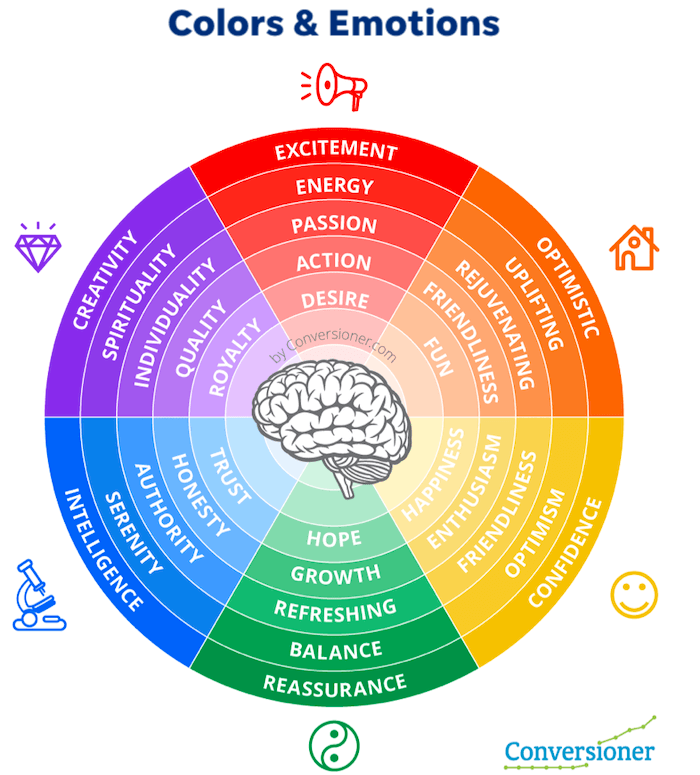
2. Start out with emotion initially
Regardless of whether you are rethinking your brand colours or deciding on a palette for new advertisements, you need to have to start with the emotion you want your audience to have. Should they reply with worry? Curiosity? Assurance? Use these emotional advert copy examples for inspiration.
The moment you know the ideal outcome, make positive to opt for the suitable shade.
Consider this instance advertisement from a Lego marketing campaign with the tagline “Make your very own tale.”
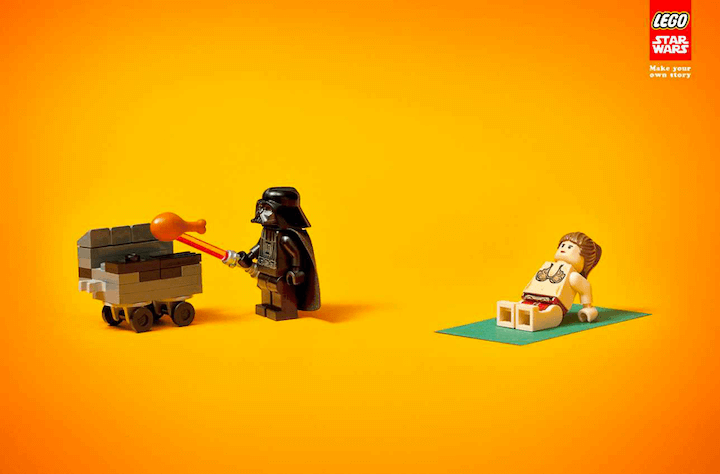
The ad reveals a Lego Darth Vader grilling with Leia sitting down in the sunshine hanging out close by. It is a playful scene with these Star Wars figures, dropping them into a casual, entertaining environment to make a new tale. It’s no wonder that the history is orange—an open, inviting shade that inspires creativeness.
3. Get encouraged by other models
The very best way to get far better at utilizing the psychology of color is to pay out interest to advertisements, web-sites, and branding and how the shades make you really feel. Examine out the web page for Bloomscape, an ecommerce plant web page focusing on Millennial and Gen-Z buyers.

The forest environmentally friendly font and bar at the major toes the line involving earthy and stylish. The product is a homey normal accent that pairs nicely with the mild peach, a warm, creative revision of Millennial pink. The selection of greens is offset with warm terracotta pots, as effectively as the pink and orange accents on the plants. The influence tends to make me want to h2o and nurture my possess vegetation, and maybe even invest in a succulent or two.
4. Maintain it reliable with your branding
When Search engine marketing corporation Reboot ran a study on symbol recognition, 78% of individuals had been equipped to recall the key color of the emblem while only 43% were able to recall the enterprise title.
If your viewers remembers your brand name by its shade, then you want to make certain it is the identical and it is all over the place. That is why holding your shades regular with your branding is paramount, and the most thriving makes understand this. Don’t forget the Dunkin Donuts rebrand to Dunkin a handful of several years in the past? All all those image adjustments, exact same aged but iconic shade choices.

Dunkin’ is a great case in point mainly because its branding is all over everything—with orange, pink, brown, as nicely as variants on these colours. It’s the many colours and versions that (in most situations) retain your branding from turning out to be flat or two-dimensional. This sales opportunities us to the next tip—giving your self the right palette to operate with.
5. Produce a model shade palette
You want to hold the shades in your internet marketing regular, but you do not want to be forgettably 1-note. Worse, this could glimpse spammy. The alternative is to have a shade scheme to operate with that lets for some range but sets some requirements.
So if you do not currently have a brand name colour palette, it’s time to make one.
Here are a number of frequent types of coloration palettes:
- Analogous: Colors upcoming to each individual other on the colour wheel.
- Complementary: Reverse colours that build significant distinction.
- Monochromatic: Distinctive shades or tones of the similar key colour.
If you’re looking for some help coming up with the palette or some inspiration, check out out the no cost design instrument Coolors. It has instance pallets and can immediately generate your personal based on a setting up color or even a photograph.

A monochromatic colour palette from Coolors.
6. Hold cultural context in brain
Notion of shade isn’t common. In point, MIT researchers identified that the words and phrases that we have and use to converse about colour may differ by language. Some communities have 3 colour categories, although others have up to 12—a major array in types, in advance of even receiving into person colours.
It follows that psychology of shade isn’t common then, either. That is why it’s vital to maintain cultural context in mind for your branding and advertising. Here’s an great cheat sheet visualization to use as a commencing point:
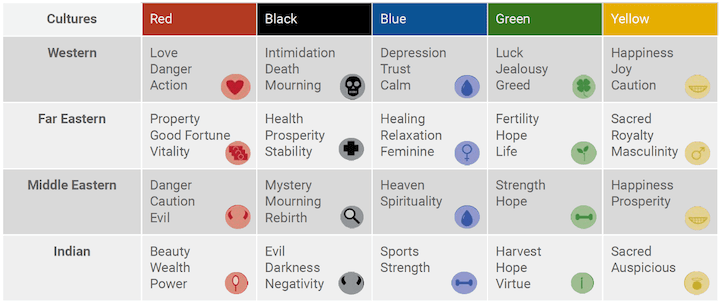
7. Try to increase some blue
If you’ve gotten to this level and you’re contemplating that preserving keep track of of cultural context, sticking with a palette, and relying on the colour psychology fundamentals is overwhelming and not possible, really don’t get worried. Having versed in the basics and incorporating shade psychology into your internet marketing workflow is heading to acquire some time and some observe.
But in the meantime, here’s a fast rule of thumb: When in question, include some blue.
It turns out that blue is the most well-known preferred coloration throughout the environment. That could possibly be 1 of the causes that some of the world’s most successful brands have blue in their logos. Fb, Twitter, Vimeo, American Convey, IBM—the list goes on and on.
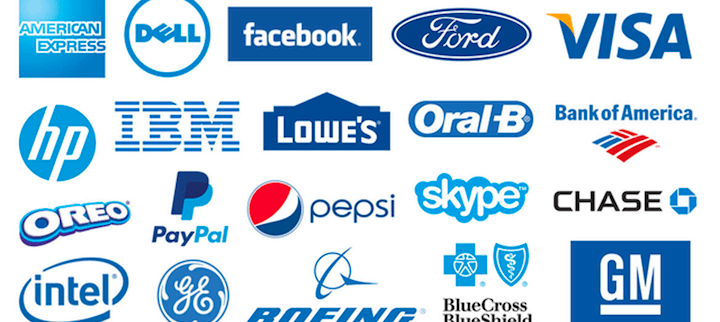
So if you are searching for a shortcut or a sure point, blue’s a risk-free wager.
8. Run color assessments with your viewers
Now, this could possibly seem like I’m likely against every thing prior to. But the actuality is that you just can’t generally forecast how your viewers will reply to a sure color—let by yourself specific shades, tones, or tints in your colour palette. Which is the place A/B testing arrives in. Test tests two distinct colour backgrounds in your adverts or buttons on your web-site and see which your audience prefers.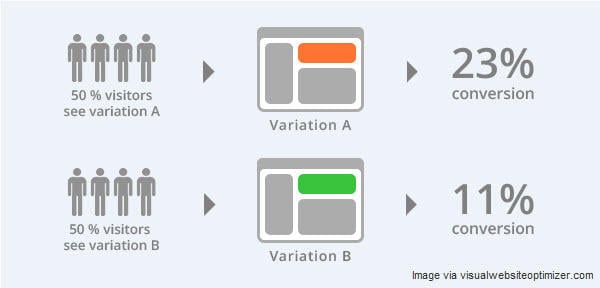
Then use that data. Which is the ideal way to leverage colour psychology to improve your marketing. Test—and keep testing.
Make colour psychology work for you
It is significant to recall that coloration psychology will influence your marketing, time period. Your viewers will make judgments about how properly your manufacturer shades suit your small business. They will react to a purple or green or blue button much more immediately. This will happen regardless of whether you’re spending notice to the psychology of shade throughout your branding or marketing style and design.
Better to use it to your benefit. Here’s a brief recap of the methods you can use to make colour psychology get the job done for you and your marketing aims:
- Understand color psychology essentials
- Commence with emotion to start with
- Get motivated by other brand names
- Make a manufacturer shade palette
- Retain cultural context in head
- Attempt to increase some blue
- Stay constant with your branding
- Operate coloration tests with your audience
Good luck!
[ad_2]
Supply connection








